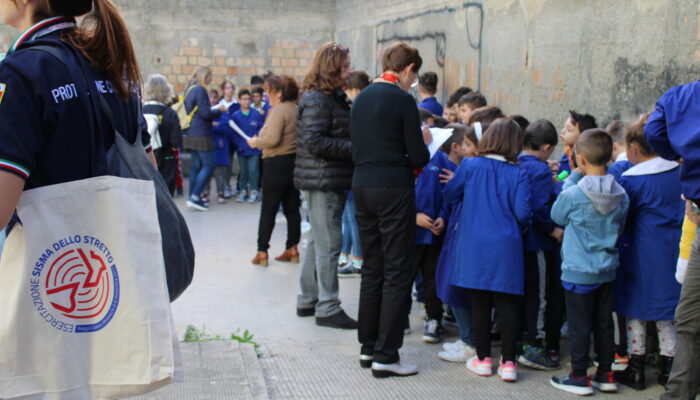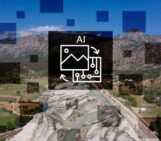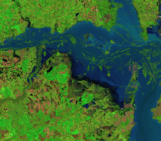

This year, the International Day for Disaster Risk Reduction, observed on October 13th, emphasises the crucial role of education in mitigating disaster risks. In this insightful interview, we have the pleasure of discussing this important topic with Engineer Marina Morando, Programme Director at the CIMA Research Foundation in Italy. She brings extensive research and operational experience in civil protection planning across various territorial levels, with a focus on participatory planning techniques to raise awareness among technicians, administrators, and citizens. Her expertise includes integrated land management for risk mitigation, local institutional support, risk communication, operating procedures for alert system management, and civil protection liability. Additionally, she has served as project manager for numerous national and international research projects.
Hi Marina, I’m excited to have the opportunity to speak with you today. You are the Programme Director at CIMA Research Foundation in Italy. Could you tell us more about your role and the work you do at CIMA?
Hi Silvia! It is a great pleasure for me to be here with you. As you said, I’m a Program Director at CIMA Research Foundation. I became director in 2023, but I’ve been a researcher at CIMA for more than 20 years. I’m in charge of managing a research programme named “Risk Management and Climate Change Adaptation: a Multidisciplinary Approach”. The program is based on the awareness that an effective response to disaster does not rely solely on knowledge of natural sciences: it is essential to synergise with social sciences, studies on participation, and risk communication. This idea is confirmed by the experience gained by the CIMA Research Foundation over the years. The primary objective of the program is to enhance risk governance by defining innovative risk management and communication policies that engage communities and key stakeholders. In this regard, the program places particular emphasis on comprehensive and people-centred Early Warning Systems. The program is dedicated to studying the strategies necessary for the evolution of civil protection systems, enabling them to adapt to emerging climate risks, including analysing the impacts of climate change on various non-structural civil protection prevention activities (such as information, communication to the population, and, more generally, planning).
On October 13th, we celebrate the International Day for Disaster Risk Reduction. To achieve the goal of the Sendai Framework of reducing global disaster risks and losses, the theme of this year will be the role of education in protecting and empowering youth for a disaster-free future. From your perspective, how important are risk awareness and education in disaster risk reduction?
Risk awareness and education are crucial in disaster risk reduction (DRR), especially for empowering youth. By instilling knowledge about risks and safety measures, we equip young people to understand potential hazards in their communities and take proactive steps to mitigate them.
Education fosters a culture of preparedness, encouraging students to participate in drills and learn emergency response skills. This involvement not only builds individual resilience but also strengthens community ties as youth engage their families and peers in discussions about safety.
Moreover, integrating DRR into educational curricula can help create a generation that values sustainability and disaster preparedness, ultimately contributing to a more resilient society. In essence, education is a key tool in transforming knowledge into action, ensuring that young people are not just passive recipients of information but active agents in reducing disaster risks.
Can you share an example of a successful disaster risk reduction program that the CIMA Research Foundation has implemented? What made it particularly effective?
The answer is easy for me because there’s a project that has felt almost like a child to me (so much so that when it grew up, I couldn’t wait for it to leave home!). This is PROTERINA-3Èvolution. This project, implemented within the Interreg Italy-France Maritime 2014-2020 programming, aimed to strengthen the region’s capacity to respond to flood risks by “building” awareness among institutions and communities. The project targeted areas in three Italian regions (Liguria, Sardinia, and Tuscany) and two French regions (Corsica and PACA). CIMA Research Foundation is the lead partner of the project.

Participatory meeting with teachers and administrators from the Municipalities of Arcola and Ameglia (SP), June 2018, PROTERINA-3évolution project – Photo courtesy of CIMA Research Foundation.
I believe the project’s effectiveness stemmed from its ability to merge scientific and technical expertise in risk management and rescue operations with the “lay” knowledge of the communities actively involved in decision-making processes.
With this project, we sought to understand the added value of involving the population in the participatory definition of local civil protection plans. What clearly emerged from the project is that these processes enhance trust in institutions and create a reservoir of social capital, institutional trust, and resilience that would be unwise to use solely for civil protection. At a recent conference we organised with the Italian Department of Civil Protection, we concluded that participatory civil protection plans can be a tool for helping to rebuild the sense of community, as these processes focus on the common good rather than questioning individual interests in disaster risk management.
In your career, you’ve been actively involved in disaster risk awareness initiatives in schools, including organising evacuation drills to test the effectiveness of flood emergency plans in Italian schools. What challenges have you faced in promoting disaster risk education in schools, and how have you overcome them?
First of all, I wouldn’t refer to evacuations but rather to civil protection drills with schools. In fact, depending on the risks, evacuation may not always be the optimal solution. In the case of flash floods, which are becoming increasingly frequent in small Mediterranean basins, it is generally preferable to plan for students to remain in the school during an emergency, moving to higher, safer floors. Even when in safe areas, they should not leave to avoid the risks of moving along city roads that could be prone to flooding.

The “Alert Kit”, a product developed during the participatory process with the schools of Valpolcevera, Genoa, February 2020, PROTERINA-3évolution Project – Photo courtesy of CIMA Research Foundation.
What have I learned from these drills? A lot—definitely more than I have taught. I’ve learned that schools are an exceptional laboratory for the social dynamics of the territory in which they are located. Therefore, I’ve realised that effective civil protection requires understanding the right language for those who need to listen. It’s important to recognise the diversity of cultures and to remember children with disabilities, as well as those who may just have a broken leg. I’ve come to understand that you must consider that students and teachers may need medications, batteries for life-saving devices, and dedicated escorts and that we can’t simply sound a siren and say, “everyone for themselves.”
I’ve learned that if there’s an alert, you need to think about the route the school bus must take, about meal provisions, and about delaying dismissal. But above all, I’ve realised that teachers, administrators, and school staff deal with these issues every day, and their experience can be an exceptional resource for the civil protection system. Thinking of schools as merely places of education is extremely reductive. They are fully operational structures within the civil protection system.
How do you see the role of technology and innovation evolving in disaster risk reduction, particularly in relation to youth education?
You’re probably asking the wrong person! Despite my young age (I just celebrated my 27th birthday for the 20th time), I consider myself more of an analogue than a digital researcher. However, it’s true that to communicate effectively with young people, one must understand their world and adapt to their communication styles, which obviously vary with age groups.
In recent years, I have had the opportunity to work on several European projects that experimented with virtual reality as an educational tool for school-aged youth. With these tools, it is possible to immerse oneself in ongoing crisis scenarios and attempt actions within those contexts to understand what can and cannot be done. This tool is potentially very interesting because it allows young people to safely experience situations that we try to describe in words. However, it is also important to highlight the limitations of these tools. They require precise and physically grounded detailed scenarios, and the behaviours that can be adopted are not generalisable; they must be defined accurately in collaboration with experts in the field. In summary, the information conveyed must be externally precise to avoid giving students false confidence or teaching inappropriate behaviours.
In what ways can local communities and governments better collaborate to integrate disaster risk education into schools?
Local communities and governments can enhance collaboration to integrate disaster risk education into schools through several key strategies: partnerships, curriculum development, Training of Trainers programs, involving parents and community members in educational initiatives, simulation exercises, awareness campaigns and so on. However, from my point of view, the more effective strategy has to be the integration of local civil protection plans and school emergency plans. This action is essential for ensuring an effective and coordinated response in case of emergencies, while also contributing to a safer and more resilient environment for all. By leveraging these strategies, local communities and governments can create a comprehensive and sustainable approach to disaster risk education in schools, ultimately fostering a culture of safety and resilience.
Post edited by Asimina Voskaki and Soheil Mohammadi




